-
ORIGINAL ARTICLE05-13-2024
Generalized Resistance Deficits in inmates with hypertension: missing resources that limit health
Revista Brasileira de Enfermagem. 2024;77(2):e20230246
Abstract
ORIGINAL ARTICLEGeneralized Resistance Deficits in inmates with hypertension: missing resources that limit health
Revista Brasileira de Enfermagem. 2024;77(2):e20230246
DOI 10.1590/0034-7167-2023-0246
Views0See moreABSTRACT
Objective:
to understand the Generalized Resistance Deficits of people deprived of liberty with hypertension in a Brazilian prison unit.
Method:
qualitative research, anchored in Salutogenesis, carried out with 38 people with hypertension from a Brazilian prison unit, from February to July 2022, with a semi-structured interview with open-ended questions, whose analysis was thematic, explaining the limitations to health in prison.
Results:
13 Generalized Resistance Deficits were reported, mostly related to the prison environment and, to a lesser extent, to the social group and the individual, respectively. Living in prison for people with hypertension implies living with a high number of Generalized Resistance Deficits, accentuating the movement towards the disease pole.
Final considerations:
knowing Generalized Resistance Deficits allows directing health promotion to support the use of available Generalized Resistance Resources and contributes to the expansion of intersectoral policies.
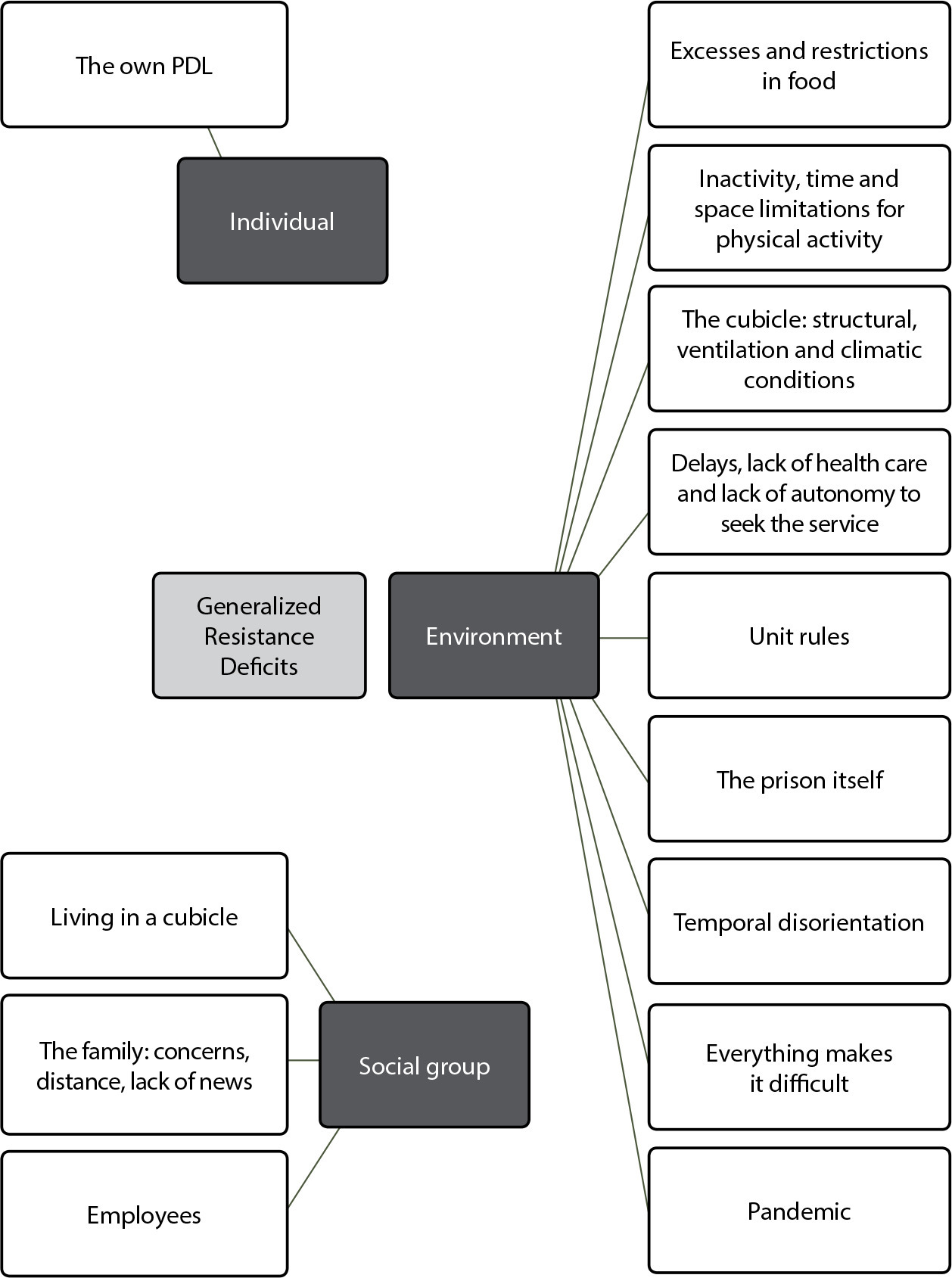
-
REVIEW05-13-2024
Lean methodology: contributions to improving work processes in health and nursing
Revista Brasileira de Enfermagem. 2024;77(2):e20230322
Abstract
REVIEWLean methodology: contributions to improving work processes in health and nursing
Revista Brasileira de Enfermagem. 2024;77(2):e20230322
DOI 10.1590/0034-7167-2023-0322
Views0See moreABSTRACT
Objective:
to investigate the contributions of applying the Lean methodology to improve work processes in health and nursing and its impact on associated financial aspects.
Method:
an integrative review, carried out in six databases, whose sample of ten (100.0%) studies was analyzed and summarized descriptively.
Results:
the outcomes obtained were stratified into: benefits/barriers to Lean Healthcare implementation; economic aspects involving Lean Healthcare implementation; and process improvements through Lean Healthcare implementation. The majority of studies (60.0%) were carried out in university hospitals, contexts that need to continually improve the quality of services provided, generally with scarce and limited resources, which support the viability of maintaining the teaching, research and extension tripod.
Conclusion:
three (30.0%) studies highlighted the financial aspects associated with Lean methodology application. The others only mentioned the possibility of financial gains through improving processes and reducing waste.
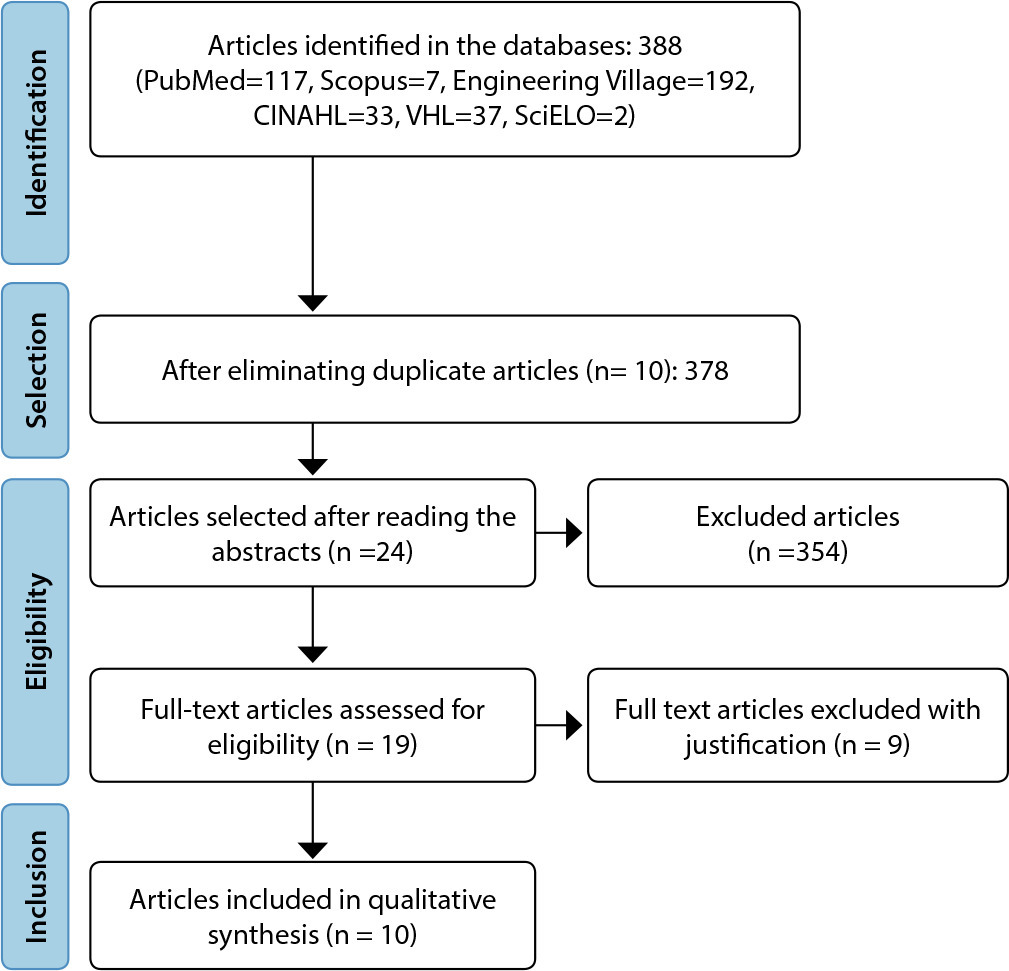
-
REVIEW05-13-2024
Stunting predictors among children aged 0-24 months in Southeast Asia: a scoping review
Revista Brasileira de Enfermagem. 2024;77(2):e20220625
Abstract
REVIEWStunting predictors among children aged 0-24 months in Southeast Asia: a scoping review
Revista Brasileira de Enfermagem. 2024;77(2):e20220625
DOI 10.1590/0034-7167-2022-0625
Views0See moreABSTRACT
Objective:
To identify predictors of stunting among children 0-24 months in Southeast Asia.
Methods:
This scoping review focused on articles with observational study design in English published from 2012 to 2023 from five international databases. The primary keyword used were: “stunting” OR “growth disorder” AND “newborn” AND “predict” AND “Southeast Asia”.
Results:
Of the 27 articles selected for the final analysis there are thirteen predictors of stunting in seven Southeast Asia countries. The thirteen predictors include the child, mother, home, inadequate complementary feeding, inadequate breastfeeding, inadequate care, poor quality foods, food and water safety, infection, political economy, health and healthcare, water, sanitation, and environment, and social culture factor.
Conclusion:
All these predictors can lead to stunting in Southeast Asia. To prevent it, health service providers and other related sectors need to carry out health promotion and health prevention according to the predictors found.
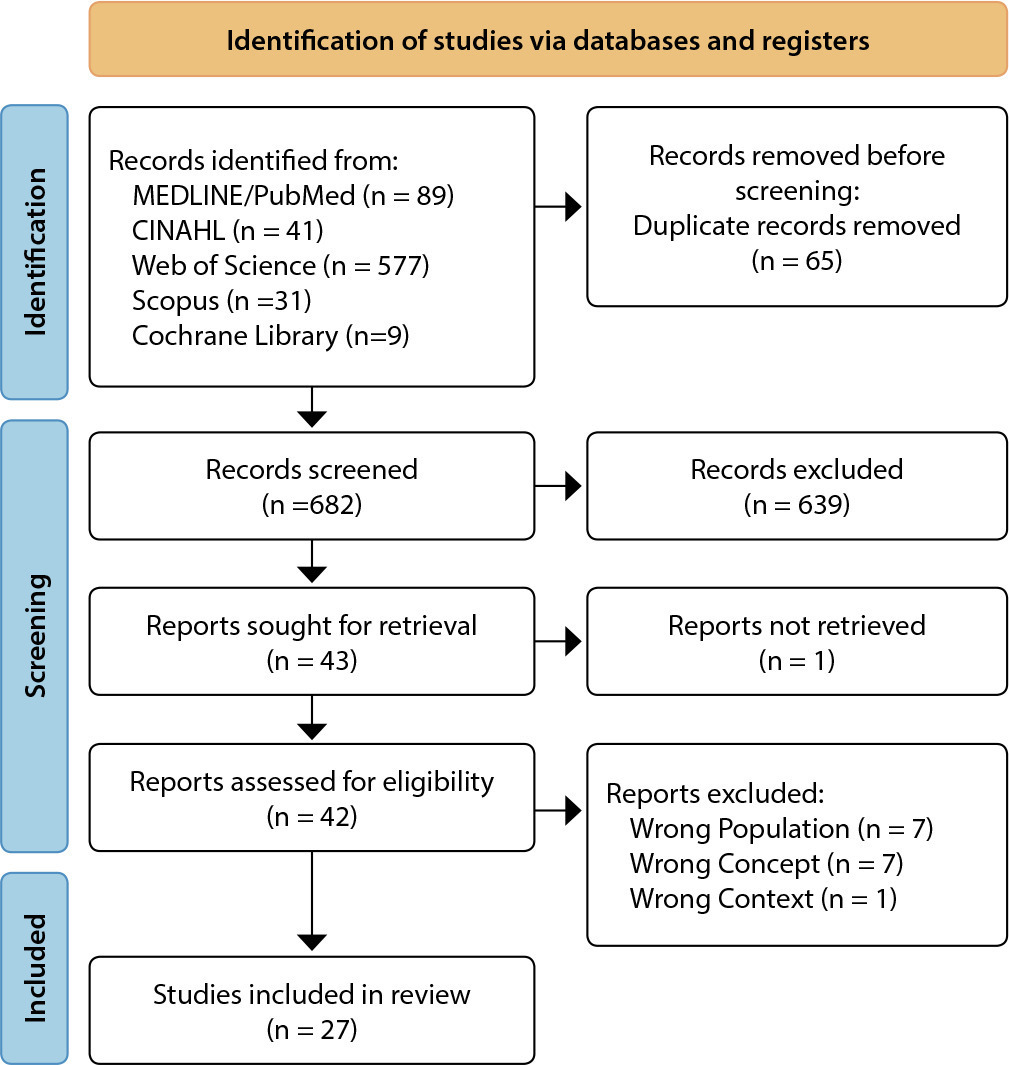
-
05-13-2024
A influência da internet nas escolhas sobre a saúde e o bem-estar dos idosos
Revista Brasileira de Enfermagem. 2024;77(1):e20230321
Abstract
A influência da internet nas escolhas sobre a saúde e o bem-estar dos idosos
Revista Brasileira de Enfermagem. 2024;77(1):e20230321
DOI 10.1590/0034-7167-2023-0321
Views0See moreRESUMEN
Objetivos:
describir el perfil de los ancianos que acceden a internet para buscar información de salud e identificar los factores que pueden influir en las decisiones de los ancianos sobre su salud a partir de la información recopilada en línea.
Métodos:
391 ancianos respondieron a un cuestionario online sobre hábitos y satisfacción con la información de salud recogida en internet. El procesamiento de datos implicó regresión logística.
Resultados:
la educación superior reduce en un 44% la probabilidad de que un anciano siga las recomendaciones de salud en los sitios web. Sin embargo, las actividades sociales y la salud autopercibida aumentan la posibilidad de seguir las recomendaciones en un 83% y un 71%, respectivamente. La creencia de que internet promueve hábitos saludables aumenta 29,2 veces la probabilidad de que un anciano siga un consejo.
Consideraciones Finales:
conocer el perfil de los ancianos que utilizan internet puede ayudar a los profesionales a formular políticas públicas y construir buenas plataformas de información sobre salud y bienestar.
-
ORIGINAL ARTICLE05-13-2024
The influence of the internet on choices about older adults’ health and well-being
Revista Brasileira de Enfermagem. 2024;77(1):e20230321
Abstract
ORIGINAL ARTICLEThe influence of the internet on choices about older adults’ health and well-being
Revista Brasileira de Enfermagem. 2024;77(1):e20230321
DOI 10.1590/0034-7167-2023-0321
Views0See moreABSTRACT
Objectives:
to describe the profile of older adults who access the internet to search for health information and identify the factors that can influence older adults’ decisions about their health based on information collected online.
Methods:
391 older adults answered an online questionnaire regarding habits and satisfaction with information about health collected on the internet. Data processing involved Logistic Regression.
Results:
higher education reduces by 44% the likelihood of an older adult following the health recommendations on internet sites. However, social activities and self-perceived health increase the possibility of following the recommendations by 83% and 71%, respectively. The belief that the internet promotes healthy habits increases by 29.2 times the probability of an older adult following the advice.
Final Considerations:
knowing the profile of older adults who use the Internet can help professionals formulate public policies and build good information platforms on health and well-being.
-
REVIEW05-13-2024
Technologies used in the treatment of burn victims in intensive care: a scope review
Revista Brasileira de Enfermagem. 2024;77(1):e20220738
Abstract
REVIEWTechnologies used in the treatment of burn victims in intensive care: a scope review
Revista Brasileira de Enfermagem. 2024;77(1):e20220738
DOI 10.1590/0034-7167-2022-0738
Views0See moreABSTRACT
Objectives:
to analyze the technologies used by the nursing team in the treatment of skin lesions caused by burns in patients under intensive care.
Methods:
this is a scope review conducted on the LILACS, Medline, PubMed, and CINAHL databases without temporal or language restrictions.
Results:
the highlighted technologies included the use of specialized dressings, biological agents such as probiotics and cyanobacteria, as well as negative pressure therapies and enzymes such as papain and collagenase. Some technologies, such as nanocrystalline silver, demonstrated efficacy in infection control.
Final Considerations:
the study identified essential technologies in burn care, emphasizing the need for further research on “soft” technologies. The findings support the promotion of evidence-based nursing care for burn patients in intensive care and enhance knowledge about effective treatments.
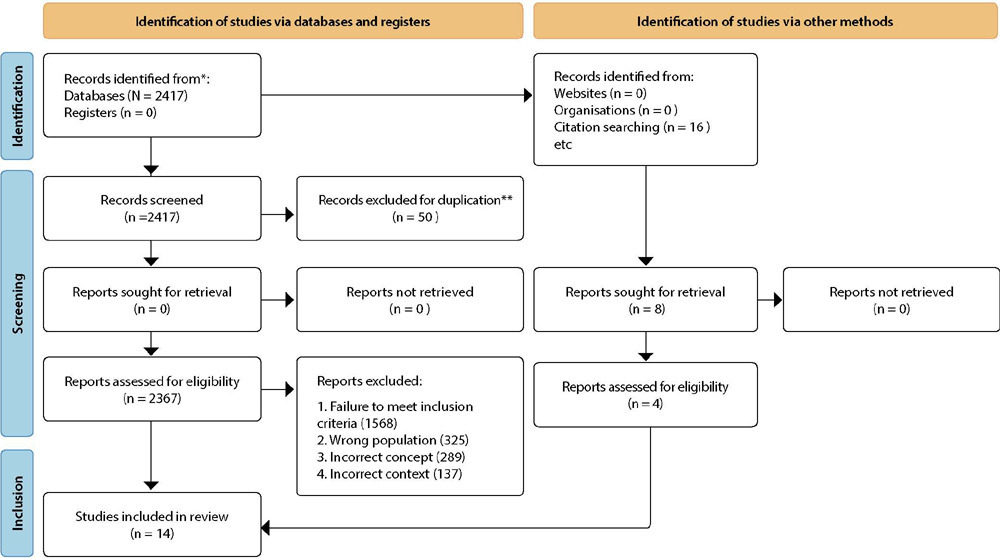
-
ORIGINAL ARTICLE05-03-2024
What is the burden of multimorbidity and the factors associated with its occurrence in elderly Brazilians?
Revista Brasileira de Enfermagem. 2024;77(1):e20220809
Abstract
ORIGINAL ARTICLEWhat is the burden of multimorbidity and the factors associated with its occurrence in elderly Brazilians?
Revista Brasileira de Enfermagem. 2024;77(1):e20220809
DOI 10.1590/0034-7167-2022-0809
Views0See moreABSTRACT
Objective:
To estimate the prevalence of multimorbidity in elderly people and its association with sociodemographic characteristics, lifestyle, and anthropometry.
Methods:
This was a cross-sectional study using data from the National Health Survey, 2019. A total of 22,728 elderly individuals from all 27 Brazilian states were randomly selected. Poisson regression models with robust variance were employed, and a significance level of 5% was adopted.
Results:
The prevalence of multimorbidity was 51.6% (95% CI: 50.4-52.7), with the highest estimates observed in the South and Southeast. Multimorbidity was associated with being female (aPR = 1.33; 95% CI: 1.27-1.39), being 80 years old or older (aPR = 1.12; 95% CI: 1.05-1.19), having low education (aPR = 1.16; 95% CI: 1.07-1.25), past cigarette use (aPR = 1.16; 95% CI: 1.11-1.21), insufficient physical activity (aPR = 1.13; 95% CI: 1.06-1.21), and screen use for 3 hours or more per day (aPR = 1.13; 95% CI: 1.08-1.18).
Conclusion:
Multimorbidity affects more than half of the elderly population in Brazil and is associated with social, demographic, and behavioral factors.
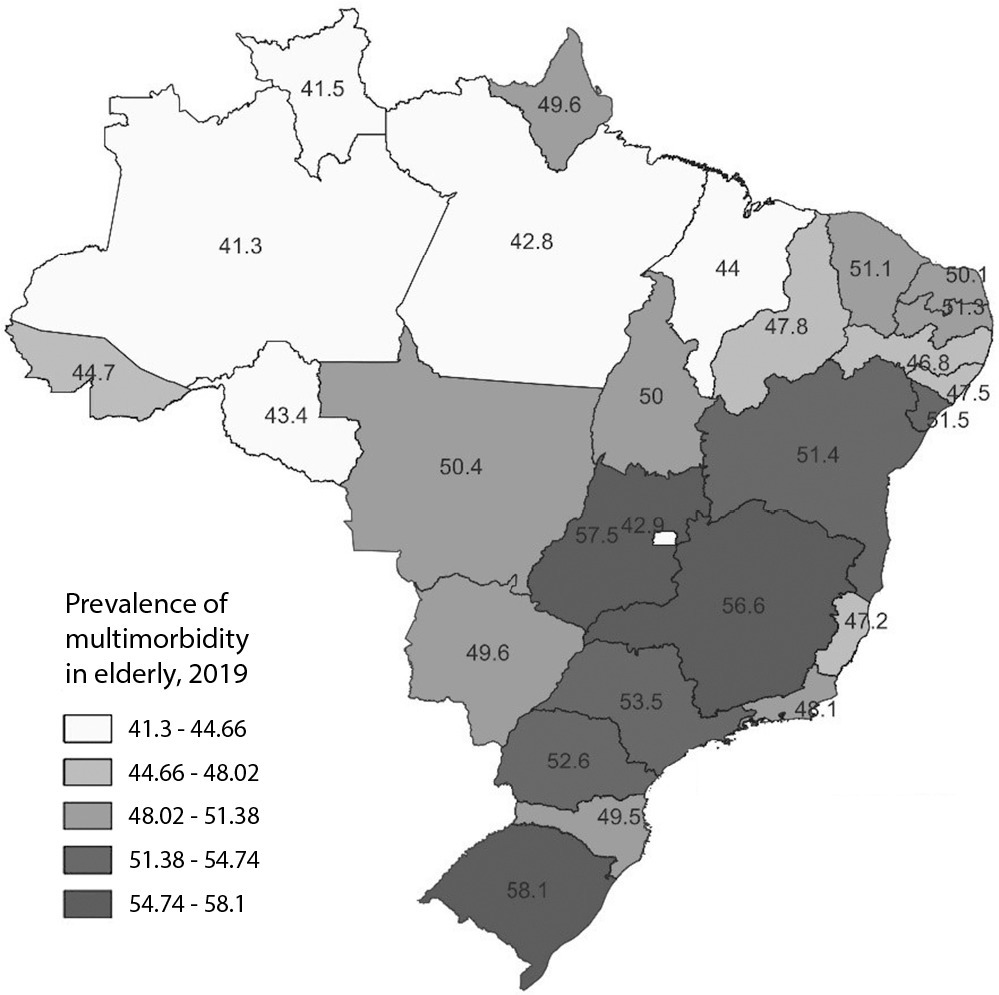
-
ORIGINAL ARTICLE05-03-2024
Cancer patient satisfaction regarding the quality of information received: psychometric validity of EORTC QLQ-INFO25
Revista Brasileira de Enfermagem. 2024;77(1):e20230358
Abstract
ORIGINAL ARTICLECancer patient satisfaction regarding the quality of information received: psychometric validity of EORTC QLQ-INFO25
Revista Brasileira de Enfermagem. 2024;77(1):e20230358
DOI 10.1590/0034-7167-2023-0358
Views0See moreABSTRACT
Objectives:
to psychometrically validate the European Organization for Research and Treatment of Cancer Core Quality of Life Questionnaire EORTC QLQ-INFO25 instrument and identify the domains that influence patients’ perception of the information received.
Methods:
a cross-sectional methodology with cancer patients in a Brazilian philanthropic hospital institution. Sociodemographic and clinical instruments, EORTC QLQ-C30, EORTC QLQ-INFO25 and Supportive Care Needs Survey – Short Form 34 were used. Analysis occurred using Cronbach’s alpha coefficients, intraclass correlation, test-retest and exploratory factor analysis.
Results:
128 respondents participated. Cronbach’s alpha coefficient was 0.85. The test-retest obtained p-value=0.21. In the factor analysis, one item was excluded. Satisfaction with the information received was 74%, with three areas with averages below 70%. In open-ended questions, there was a greater desire for information.
Conclusions:
validity evidence was obtained with instrument reliability, consistency and stability. Respondents expressed satisfaction with the information received.
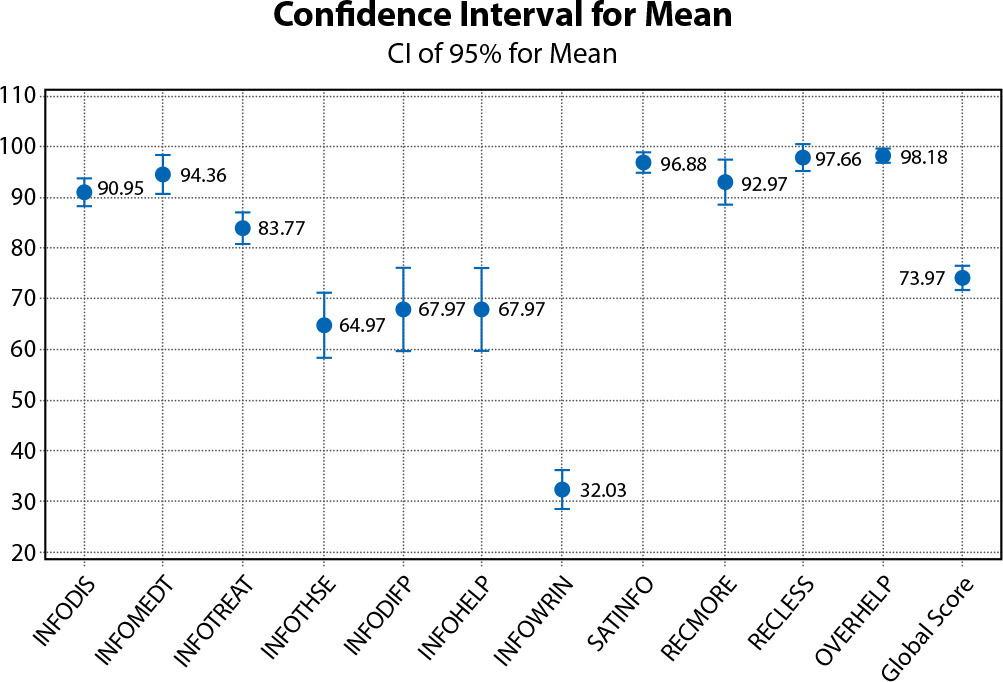
-
ORIGINAL ARTICLE06-17-2020
Implementation of improvement cycle in health records of mobile emergency prehospital care
Revista Brasileira de Enfermagem. 2020;73(4):e20190049
Abstract
ORIGINAL ARTICLEImplementation of improvement cycle in health records of mobile emergency prehospital care
Revista Brasileira de Enfermagem. 2020;73(4):e20190049
DOI 10.1590/0034-7167-2019-0049
Views0See moreABSTRACT
Objective:
to evaluate the effect of the implementation of a quality improvement cycle in the completion of occurrence forms of a Mobile Emergency Service.
Methods:
this is a time series, quantitative, quasi-experimental study without control group, with three quality assessments in which was used an improvement cycle for adequacy of health records in Mobile Emergency Service Patos.
Results:
in 100% of the seven criteria, there was improvement between evaluations. Noncompliance with criteria reduced from 95 cases in the first evaluation to eight cases in the third evaluation.
Conclusions:
the representation of joint results between the three evaluations highlighted progressive improvement in the compliance with each criterion.

-
ORIGINAL ARTICLE09-21-2020
Stigma perceived by overweight women
Revista Brasileira de Enfermagem. 2020;73:e20190321
Abstract
ORIGINAL ARTICLEStigma perceived by overweight women
Revista Brasileira de Enfermagem. 2020;73:e20190321
DOI 10.1590/0034-7167-2019-0321
Views0See moreABSTRACT
Objective:
to understand the experience of discrimination perceived by overweight women.
Methods:
a qualitative research conducted at an outpatient clinic in Salvador, Bahia, where eleven women were interviewed. The interviews were transcribed and submitted to thematic content analysis.
Results:
the analysis of the statements expressed three categories: Suffering discrimination in different social contexts: denounced disrespect, hostility, veiled and/or explicit exclusion, prejudice, injustice and insults lived in public transport, at work, in the family environment, in social events and commercial establishments; Experiencing negative feelings about discrimination: revealed inferiority, sadness, shame, fear, anger, frustration, low esteem and discouragement faced by women; Reacting to discrimination: expressed isolation of marital intimacy and social encounters, removal from work, concealment of body and feelings and even illness of women.
Final considerations:
the discrimination experienced in various settings has caused suffering, embarrassment, negative feelings, shame, isolation and loss in women’s lives.
-
ORIGINAL ARTICLE09-19-2022
The experience of trans or transvestite women in accessing public health services
Revista Brasileira de Enfermagem. 2022;75:e20210713
Abstract
ORIGINAL ARTICLEThe experience of trans or transvestite women in accessing public health services
Revista Brasileira de Enfermagem. 2022;75:e20210713
DOI 10.1590/0034-7167-2021-0713
Views0See moreABSTRACT
Objective:
to understand the meanings of being a trans or transvestite woman in the care provided by Unified Health System health professionals.
Methods:
qualitative research, guided by Heidegger’s phenomenology, with 10 trans or transvestitewomen residing and using the Unified Health System in a municipality in Minas Gerais. Fieldwork was carried out by interviews.
Results:
trans or transvestitewomen reproduce the social patterns constructed and accepted by the female, with the search for hormonization being common, and, when it is difficult to obtain a prescription, they resort to self-medication. Social name use and acceptance by health professionals promote recognition. Trans or transvestitewomen experience prejudice on a daily basis, not only by professionals, but also because of the assumption of diagnoses by other users.
Final considerations:
transphobia promotes withdrawal from health services, due to fear, shame, knowledge about professionals’ unpreparedness, triggering illness, social exclusion and violence.
-
ORIGINAL ARTICLE06-10-2022
Effects of the economic recession on suicide mortality in Brazil: interrupted time series analysis
Revista Brasileira de Enfermagem. 2022;75:e20210778
Abstract
ORIGINAL ARTICLEEffects of the economic recession on suicide mortality in Brazil: interrupted time series analysis
Revista Brasileira de Enfermagem. 2022;75:e20210778
DOI 10.1590/0034-7167-2021-0778
Views0See moreABSTRACT
Objectives:
to analyze trends in suicide rates in Brazil in the period before and after the start of the economic recession.
Methods:
interrupted time series research using national suicide data recorded in the period between 2012 and 2017 with socioeconomic subgroups analyses. Quasi-Poisson regression model was employed to analyze trends in seasonally adjusted data.
Results:
there was an abrupt increase in the risk of suicide after economic recession in the population with less education (12.5%; RR = 1.125; 95%CI: 1.027; 1.232) and in the South Region (17.7%; 1.044; 1.328). After an abrupt reduction, there was a progressive increase in risk for the black and brown population and for those with higher education. In most other population strata, there was a progressive increase in the risk of suicide.
Conclusions:
the Brazilian economic recession caused different effects on suicide rates, considering social strata, which requires health strategies and policies that are sensitive to the most vulnerable populations.
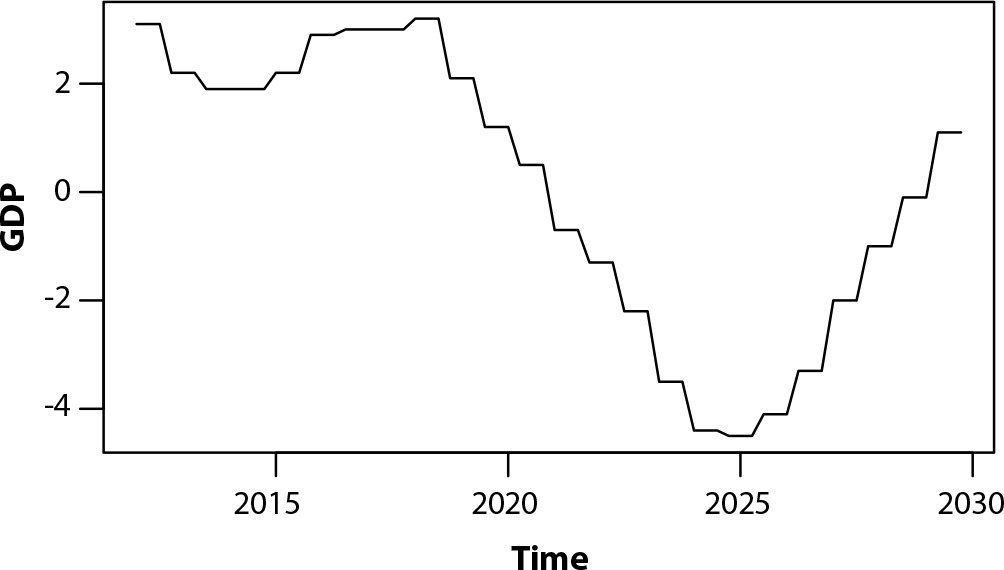
-
REVIEW05-21-2021
Evaluation strategies in active learning in higher education in health: integrative review
Revista Brasileira de Enfermagem. 2021;74(2):e20201055
Abstract
REVIEWEvaluation strategies in active learning in higher education in health: integrative review
Revista Brasileira de Enfermagem. 2021;74(2):e20201055
DOI 10.1590/0034-7167-2020-1055
Views0See moreABSTRACT
Objectives:
to analyze scientific evidence on evaluation strategies for active learning methods in health undergraduate programs.
Methods:
integrative literature review in the Medical Literature Analysis and Retrieval System Online, Latin American and Caribbean Literature in Health Sciences, Nursing Database, Scopus, Web of Science and Education Resources Information Center databases.
Results:
different evaluation strategies are used: Presentation of seminars, Self-evaluation, Evaluation of student performance in Tutotest-Lite tutoring, Peer Evaluation, Active Learning and Critical Thinking Self-evaluation Scale, Objective and Structured Clinical Exam, Portfolio, Progressive Disclosure Questions, Modified Dissertation Questions, Progression Test, Dissertation Test, Objective Test, Immediate Learning Checks, Clinical Case Resolution and Cumulative Test.
Final Considerations:
evaluation strategies in active learning are used in combination, aiming at the affective, cognitive and psychomotor development of the student. However, studies with greater power of scientific evidence would be needed.
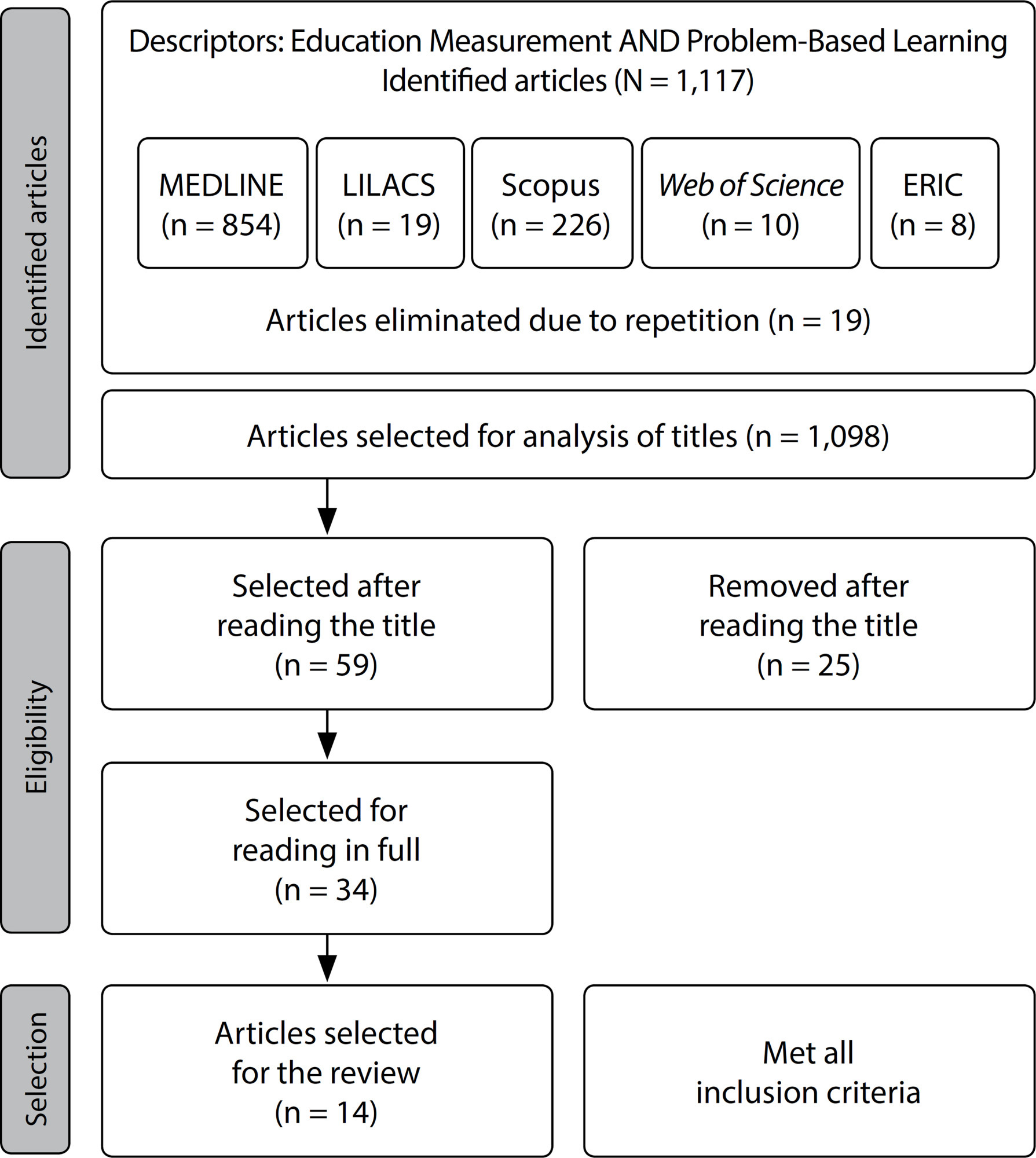
-
ORIGINAL ARTICLE12-05-2019
Participation in university activities for the elderly: Motivations of Brazilian and Spanish Seniors
Revista Brasileira de Enfermagem. 2019;72:104-110
Abstract
ORIGINAL ARTICLEParticipation in university activities for the elderly: Motivations of Brazilian and Spanish Seniors
Revista Brasileira de Enfermagem. 2019;72:104-110
DOI 10.1590/0034-7167-2018-0181
Views0See moreABSTRACT
Objective:
To understand the reasons that lead Brazilian and Spanish seniors to enroll in a university for the elderly.
Method:
A qualitative study that used Symbolic Interactionism as a theoretical reference and the Grounded Theory as a methodological reference. We interviewed 44 seniors enrolled in universities for the elderly from two countries (Brazil and Spain) between October 2014 and May 2016.
Results:
The motivations were related to the necessity of occupying the free time, even for improving health; to the opportunity of access to university learning bypassing formal education criteria; to the expansion of social relations, sought through the creation of new friendships, the desire to know other people’s life experiences, and the exchange of knowledge.
Final considerations:
Older people have sought in universities for the elderly a pleasurable way of learning and occupying the free time.
-
ORIGINAL ARTICLE08-10-2020
Knowledge, applicability and importance attributed by nursing undergraduates to communicative strategies
Revista Brasileira de Enfermagem. 2020;73(6):e20190411
Abstract
ORIGINAL ARTICLEKnowledge, applicability and importance attributed by nursing undergraduates to communicative strategies
Revista Brasileira de Enfermagem. 2020;73(6):e20190411
DOI 10.1590/0034-7167-2019-0411
Views0See moreABSTRACT
Objectives:
To evaluate the knowledge, applicability and importance that nursing students attribute to therapeutic communicative strategies.
Methods:
This is a quantitative study (survey) with nursing undergraduates from a public institution. The online questionnaire by the SurveyMonkey tool, comprising the informed consent form and six questions, had its relevance, clarity and operability assessed by experts.
Results:
Of the 104 graduates, 50 participated in the study; the most well-known and applied strategy was Therapeutic Communication, followed by Ask-Tell-Ask, NURSE and Tell Me More; the least were PACIENTE and SPIKES. Most use the strategies they know best; all were considered important by at least 82% of the students.
Conclusions:
The partial knowledge and application of these strategies by the students contributes to reflect on the complexity of their teaching-learning process.
-
ORIGINAL ARTICLE05-28-2021
The work of a Brazilian nursing team of collective health in the special indigenous health district
Revista Brasileira de Enfermagem. 2021;74(2):e20200116
Abstract
ORIGINAL ARTICLEThe work of a Brazilian nursing team of collective health in the special indigenous health district
Revista Brasileira de Enfermagem. 2021;74(2):e20200116
DOI 10.1590/0034-7167-2020-0116
Views0See moreABSTRACT
Objective:
To identify the potential and the limits of the actions of the nursing team in the Primary Health Care for the Health of the Indigenous.
Methods:
This is a quantitative study guided by the Theory of Practical Intervention of Nursing and Collective Health. 230 nursing professionals participated, responding to an instrument about the frequency of the actions carried out in assistance, management, teaching, and research.
Results:
168 nursing technicians and 62 nurses participated. As strengths, 80% participated in the assistance most of the time. Stand out: 90.3% and 71% of nurses carried out nursing consultations and house visits, respectively. As a limitation, the involvement in education and research is small. Only 2% of the interviewees carried out scientific researches, reflecting the need to broaden and qualify care and improve the use of traditional practices, overcoming the biomedical model.
Final considerations:
Nursing assistance is essential in the modification and monitoring of the epidemiological profile of indigenous populations, and its results allow for the planning of quality actions.

Search
Search in:
Nuvem de Tags
Adolescente (85) Atenção Primária à Saúde (239) COVID-19 (91) Criança (91) Cuidados de Enfermagem (269) Educação em Enfermagem (151) Educação em Saúde (139) Enfermagem (930) Enfermagem Pediátrica (86) Estudantes de Enfermagem (77) Estudos de Validação (131) Família (87) Idoso (208) Promoção da Saúde (99) Qualidade de Vida (104) Saúde do Trabalhador (86) Saúde Mental (145) Saúde Pública (82) Segurança do Paciente (150) Tecnologia Educacional (100)



